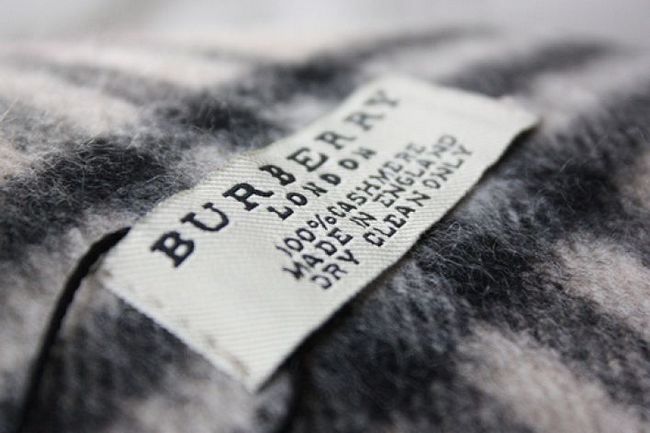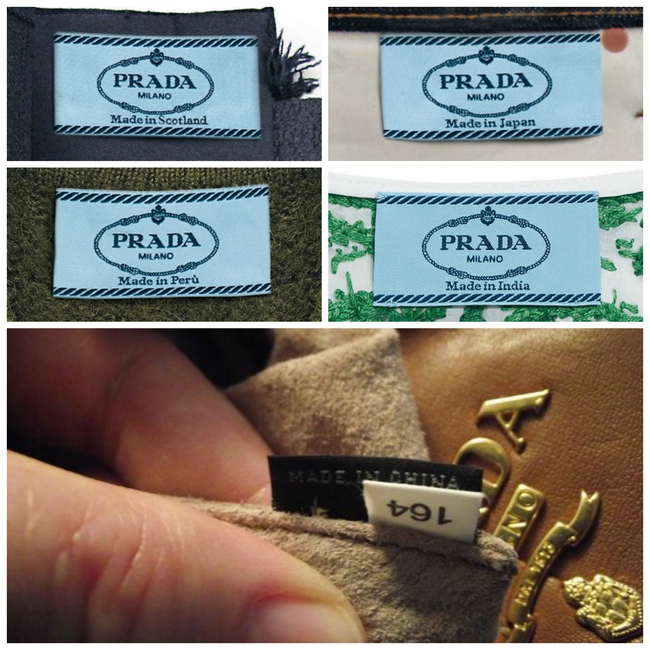(image via modakulvar.com)
Some fashion houses, in their efforts to create high quality collections while keeping costs low, search the world over for competent and cost-effective suppliers. A number of brands don’t even source their materials from a single country or manufacturer due to the differences in pricing and quality. As such, the “labelling” sometimes becomes an approximation, where a piece gets tagged as “Made in EU” (even if it was sewn in Asia) because the fabric and trimmings came from European regions. At other times, designers use the eclectic sourcing as license for clever labelling (e.g. “Designed in Paris”) to boost their appeal to consumer.
But does country of origin (COO) significantly affect the commercial potential of designer collections?

Convinced that it will boost their brand's commercial appeal, some designers tend to embellish the COO information
(image via theluxurycloset.com)
What the Studies Say
Some research findings indicate that the overall perception of a particular country, including traditions, economic status, history, and political background, affect how consumers perceive the products coming from that country. Although this effect varies depending on the product type, it is said to be strongest for luxury and durable goods.
That last bit should get your attention, as many designer apparel and accessories are generally considered luxury items. No wonder why some fashion brands make a big deal out of their “made in” labels.
(image via thefashionisto.com)
Research conducted by Barbara Mroz-Gorgon, Ph.D., in 2013, revealed that “the Versace brand was defined as the one reflecting the Italian climate” and was recognizable and identifiable with Italy and its reputation for apparel style and quality. This finding echoed a 1999 Goudge and Ivanov study that found consumers are less likely to buy Versace jeans if they were not sure they were made in Italy – a revelation that no doubt had many labels re-evaluate their branding efforts.
Modern Applications, Silver Linings
The “made-in image” has moved China to increase its focus on setting up manufacturing facilities in various parts of Europe in the last three years. It has also encouraged marketing experts to advocate branding strategies that incorporate the COO effect.
However, designers and business owners should not make too much of a fuss about the “made in” issue as it is just one aspect of marketing and selling products. If your label has established a solid reputation for quality and style, the emotional value of the country of origin effect will not be substantial enough to reduce your fashion collection’s commercial potential or diminish your brand image significantly.
(images via prada.com and forum.purseblog.com)
Take Prada, for example. Around 20% of the Italian fashion house’s collection is made in China. It also has sourced its sneakers in Vietnam. And its Miu Miu bags are labeled as “Made in Turkey.” Despite this, Prada still managed to gain 11.6% in sales in the first six months of this year.
It’s important for brand owners and fashion designers to create a coherent and clear marketing plan. This will help you avoid overly fixating on certain aspects of promoting a collection of accessories or clothing, to the point where you neglect what really matters to your label. Rather than obsessing over whether your clients prefer “Made in EU” or “Made in Bulgaria”, focus instead of delivering what they want to see and wear next season.





About The Author: BridgeShowroom
Since 2011, BRIDGE SHOWROOM has been representing Europe's finest designers in America.
We are partners, linking together retailers and designers.
More posts by BridgeShowroom